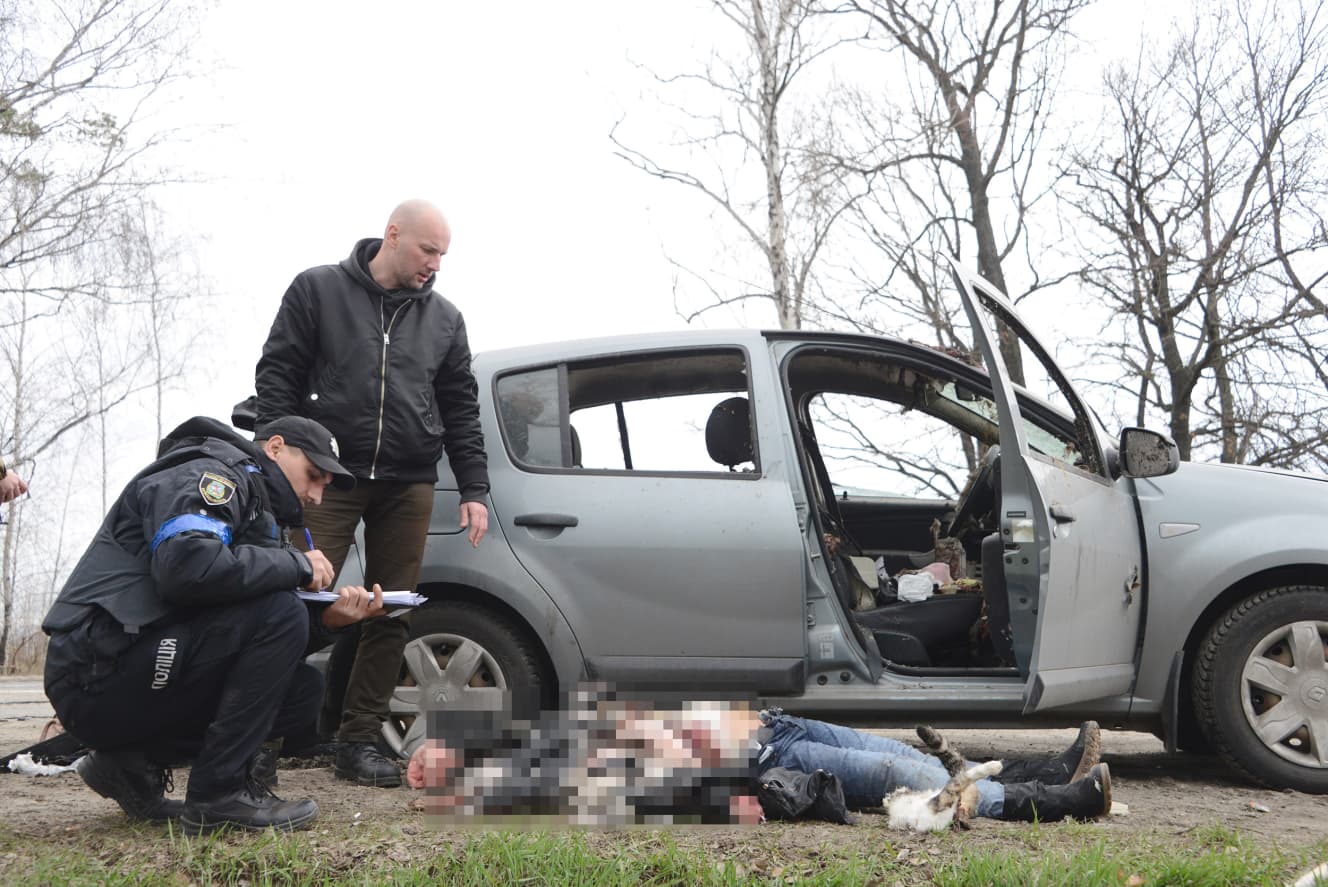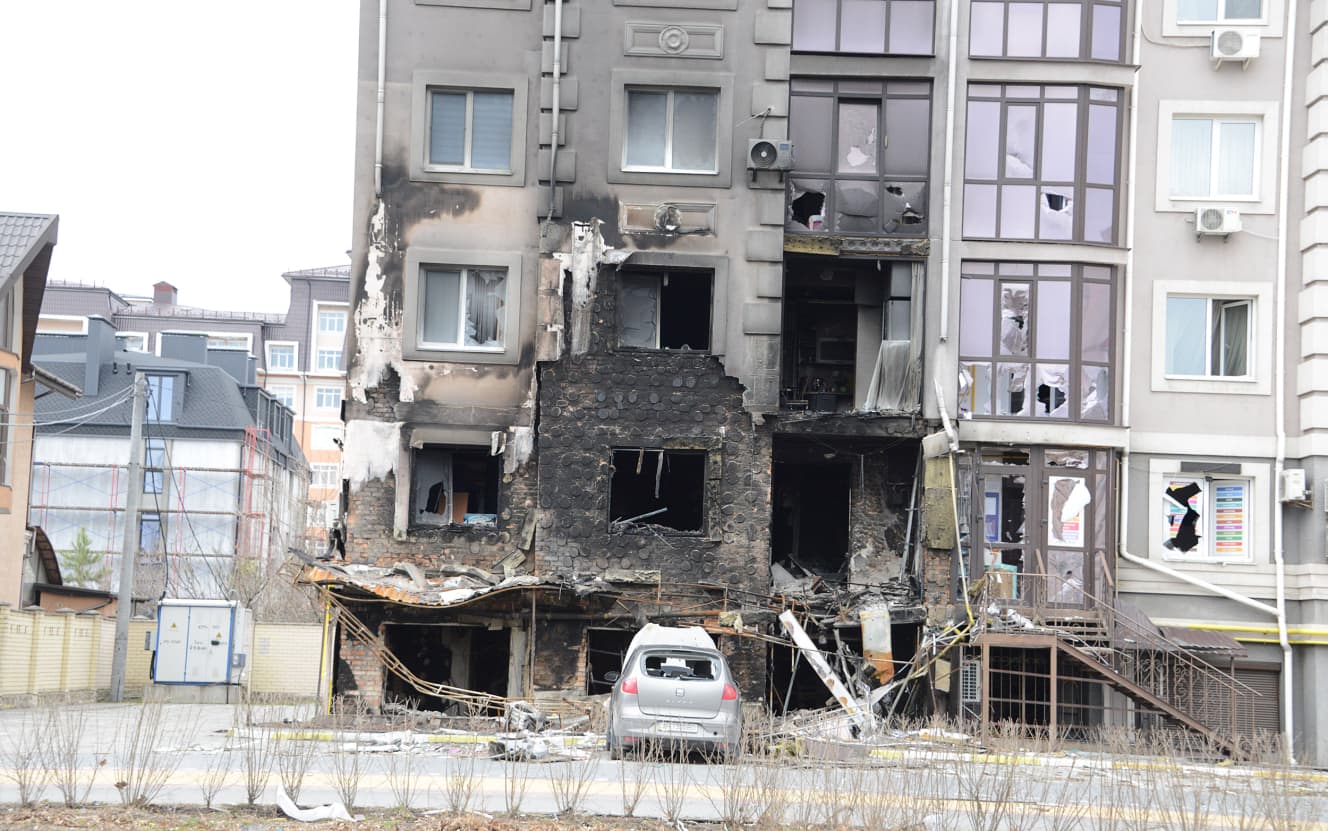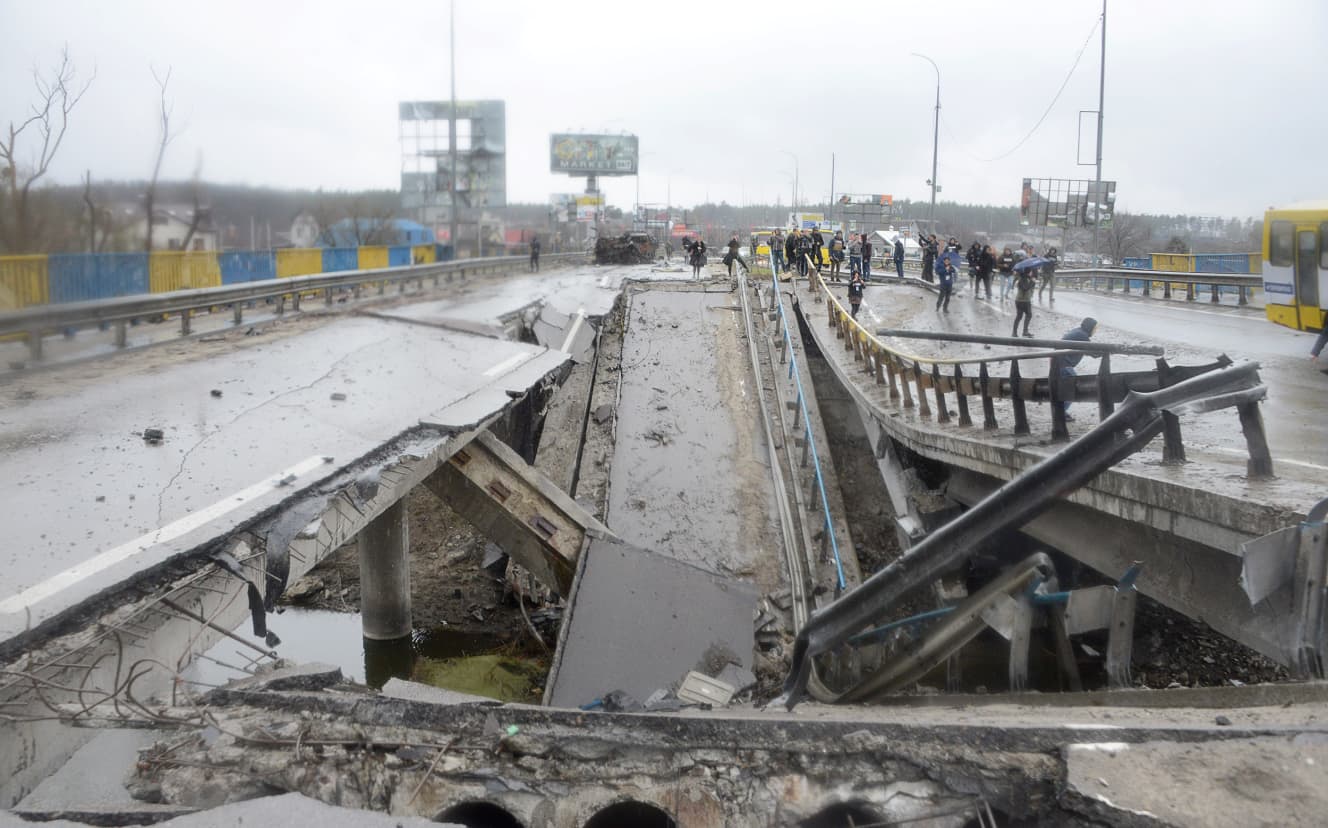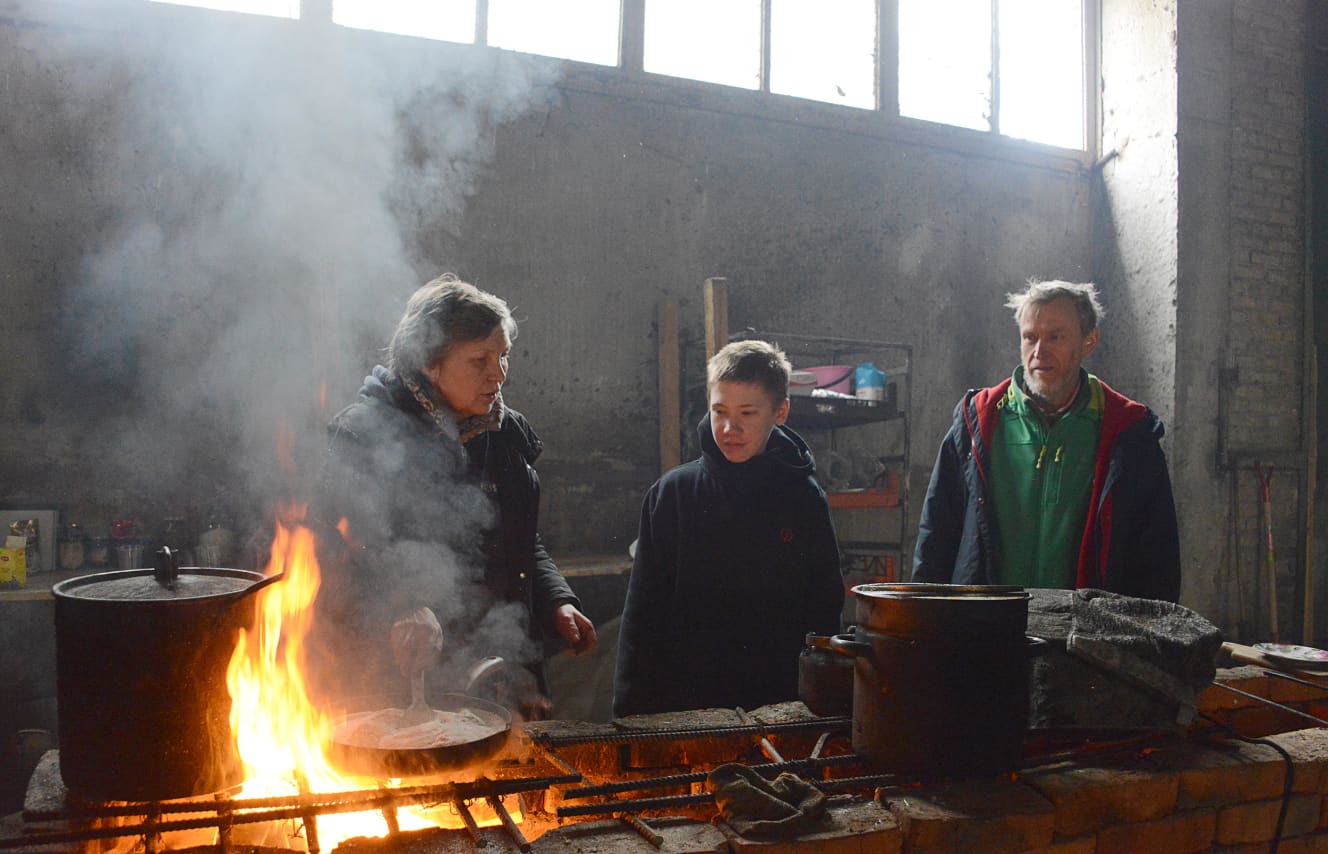The Truth about the Russian Military “Massacre” as told by the Residents of Bucha
A man crucified by a vehicle and dragged through the streets of a town near Kieu Shocking on-site report A family huddled together in an apartment where electricity, gas, and water had been cut off.

When we entered the house, the rooms were littered with shattered glass, pieces of concrete, and wood, which made a crunching sound as we stepped on them. Fruit was left devoured on the living room table. The wine cellar in the kitchen was empty, and bills and undrinkable whiskey bottles littered the floor in a mess. A large television set had been taken away in a heap.

A neighbor told me that her house had been occupied by the Russian army for about three days,” said journalist Voladimir.
The journalist Voladimir, 44, looked exhausted.
His home is in Bucha, a town on the outskirts of the capital city of Kiev, which has a population of about 40,000. The city, which has a population of about 40,000, was the scene of a massacre of civilians by the Russian military, in which more than 400 bodies were found.
As the war intensified, Voladimir moved with his wife and daughter to an apartment in Kieu, and when he returned to his home after the Russian troops withdrew in early April, he found it had been wrecked.
He said, “They stole my TV and Playstation, but they didn’t take my life or the lives of my family. It was probably better still, considering the many civilians who were killed.”
The barbaric acts that came to light after the Russian troops withdrew – no matter how much they denied involvement, the evidence on the ground told the whole story.
Andrei, 44, a neighbor who said he was held captive by the Russian military at Boradimir’s house, opened his heavy mouth.
He said, “I don’t remember the date because my cell phone didn’t work because of the power outage, but it was around mid-March when the Russian army broke into my house. They took me outside, crucified me on an armored car with other residents, and took me around town. They also held me at gunpoint.
Andrei was repeatedly interrogated by the Russian military.
“Are you connected to the Ukrainian army?
Are you a neo-Nazi?”
When he denied any of these questions, he was stripped naked and subjected to a “physical examination” to see if he had any tattoos symbolizing neo-Nazis.
Andrei was taken to a nearby apartment building and released safely three days later. The rows of trees around the apartment were still mowed down by Russian armored vehicles.
Most of the residents of the four apartment buildings were evacuated to other locations, but some are still living there. Electricity, gas, and water have been cut off, and although volunteers are coming to distribute food, the temperature is about the same as in the middle of winter in Tokyo. Even during the day, their breath is white. To survive the bitter cold, the residents heat their homes with firewood in a warehouse and draw water from a nearby well.
Alexandra, 62, who lives in an apartment with her wife and son, demonstrated this way of life.
Put salt seared in a frying pan in a cloth bag to keep it warm,” he said. It keeps you warm.
Alexandra’s sister was shot and killed while evacuating Bucha by car. It is believed to have been a massacre by the Russian military.
Her husband, who was with her in the car, was only injured. When I was informed of my sister’s death through her husband, my body froze.
After I finished interviewing Alexandra, I happened to find her body on the streets of Bucha. It was the body of a woman lying on her back, along with the carcass of a dead cat. There were multiple gunshot holes in the windshield of a car parked nearby. When asked by the police officer who was conducting an on-the-spot investigation, he replied: “The woman was in the passenger seat of the car.
The woman was definitely shot by the Russians while she was riding in the passenger seat.
Behind the church in Bucha is a mass grave containing the bodies of civilians wrapped in black bags; when we visited on April 9, there were 40 of them. A senior police official on the scene assured me, “The bodies are covered with bullet holes.
The bodies have bullet holes in them. This was genocide by the Russian military targeting civilians.
How long will the Russians continue to keep their cover intact?





Kieu’s subway is said to run the deepest in the world. The deepest subway station in Tokyo is Roppongi Station on the Toei Oedo Line, at about 42 meters, but Kieu’s subway is more than double that, with some stations over 100 meters deep.
When you pass through the ticket gates and take the escalator, it is so long that you cannot see the bottom landing at all, and it takes more than one minute to reach the platform. The reason it is located so deep is that it was built as a refuge during the Cold War, and citizens have been gathering at the metro stations since immediately after the recent Russian invasion.
One such station, the Lukyanaska station, was home to more than 100 people until early April. Mattresses, cardboard boxes, Boston bags, and other items were neatly arranged on the pillars of the arched platform, and some people even brought their own tents to sleep in.
Oleksy, 46, a 15-year resident of Kieu with a stubble beard, sat cross-legged on his mattress, his eyes glued to a video on his smartphone.
I came here with a Boston bag full of clothes because I was evicted from my old apartment in Kieu,” he said. I do yoga during the day, and I also go out to volunteer. I’ve been living there for about a month now.”
In mid-March, an apartment building and a high-rise building near the entrance to the station were bombed, and the sound of the explosions roared over the platform, but “everyone was safe,” according to Olexy.
The staff of a non-governmental organization (NGO) is always in and out of the building, and in addition to food distribution, movie screenings and other events are held there. Wi-Fi is also available. Even so, Oleksy said, “I can’t do my laundry and I can’t take showers at all. Due to the war, he has lost his transportation job and has only 50 grivnas (about 200 yen) left in his pocket.
As if to add insult to injury, they are now being forced to leave the station.
One of the NGO staff said, “This is a measure to gradually restore the subway system from April 11, but we still have 19 people to go. But we still haven’t decided where the 19 people will go, and we are still pondering what to do.
Checkpoints are still set up throughout the city of Kieu, and soldiers with long guns are on the lookout. The curfew is still in effect, and alarms are sounding every day. Nevertheless, during the daytime there are still many people and cars on the streets, and things seem to be slowly calming down. The subway has only been running partially so far, but as the restoration progresses, this concern also comes to the fore.
Some people feel stressed because they are looked at with curiosity by passengers,” said one of the aforementioned staff members.
While many evacuees are finding their way to their destinations, packing up their belongings, and leaving the platform, Oleksy is at a loss.
I have no family because I am separated from my ex-wife and children. I don’t have a job or a place to go at this point, so I’m thinking about asking friends far away for help.”

From the April 29, 2022 issue of FRIDAY
Reporting, writing, and photography: Takehide Mizutani
Nonfiction writer